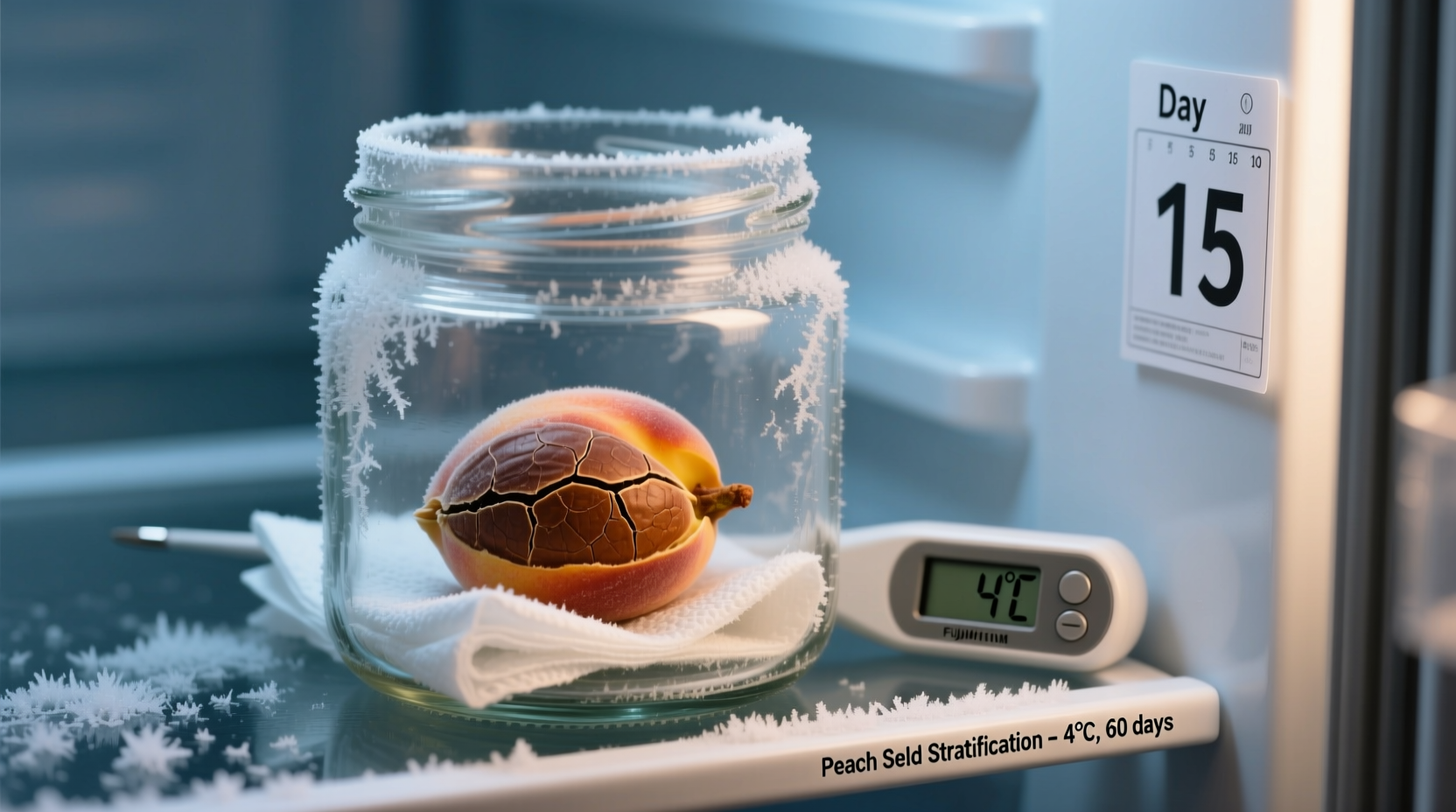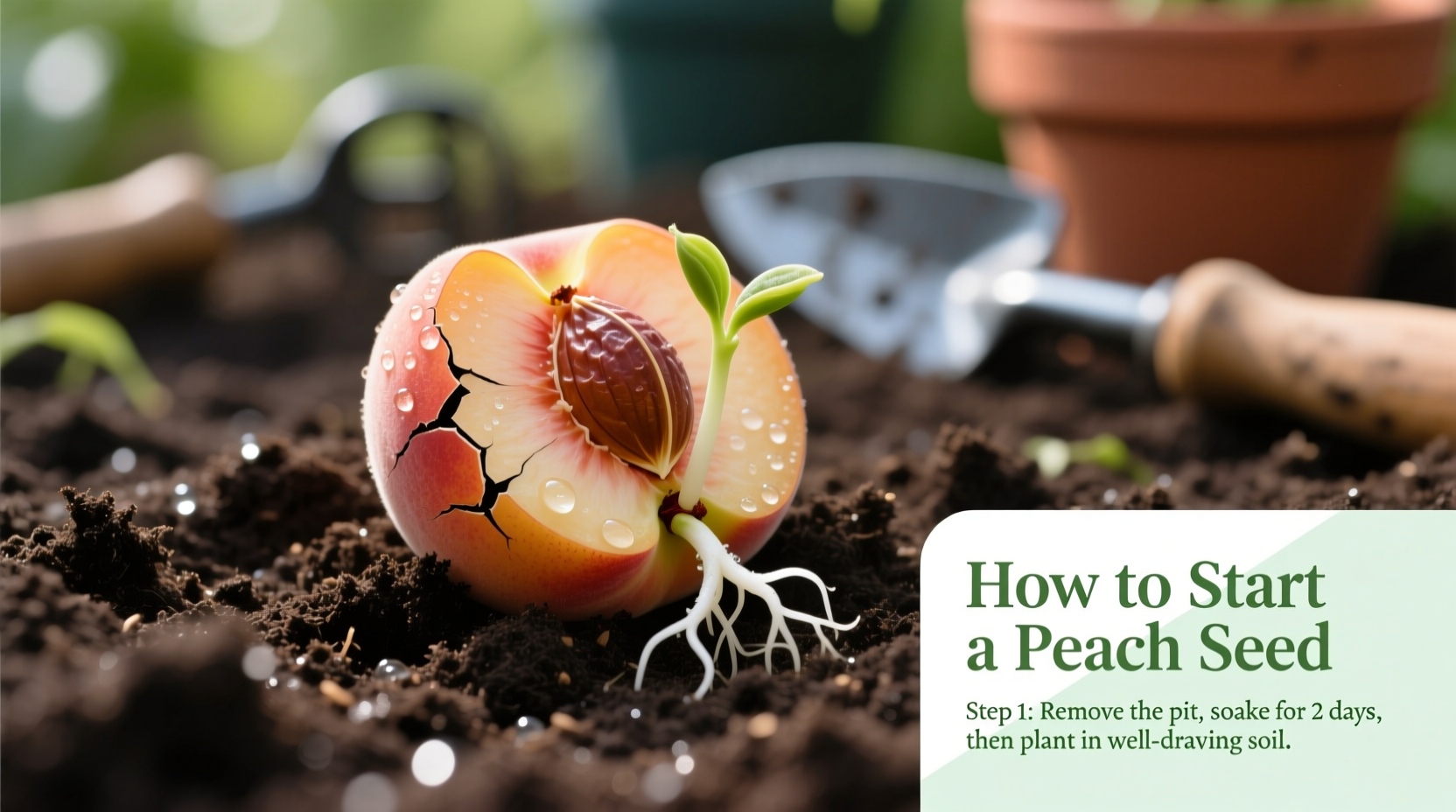Have you ever wondered what to do with that peach pit after enjoying the juicy fruit? Growing your own peach tree from seed is not only possible but surprisingly straightforward when you understand the natural germination process. Unlike many fruit trees that require grafting, peaches readily grow from seed, though they won't produce identical fruit to the parent tree. The key to success lies in mimicking nature's winter cycle through proper stratification—a cold treatment that breaks the seed's dormancy. Our comprehensive guide walks you through every step, from selecting the right pit to nurturing your seedling into a thriving tree.
Understanding Peach Seed Germination Requirements
Peach seeds (Prunus persica) have evolved with specific germination requirements that ensure they sprout at the optimal time in nature. Unlike some seeds that germinate quickly, peach pits require a period of cold exposure to trigger the biochemical changes necessary for growth. This process, called stratification, simulates winter conditions and is absolutely essential for successful germination.
| Germination Factor | Required Condition | Natural Timing |
|---|---|---|
| Chilling Hours | 600-900 hours below 45°F (7°C) | Winter months |
| Soil Temperature | 65-85°F (18-29°C) for germination | Late winter to early spring |
| Germination Time | 1-2 months after stratification | Spring |
| Fruit Production | 3-4 years after planting | Mid to late summer |
Step 1: Selecting and Preparing Your Peach Pit
The journey begins with selecting the right peach pit. Choose pits from locally grown, non-commercial varieties when possible, as store-bought peaches often come from cultivars bred for shipping rather than flavor or germination success. Local varieties have adapted to your climate, giving your seedling a better chance of thriving.
After enjoying your peach, carefully remove the pit without cracking it. Wash away all fruit residue using lukewarm water and a soft brush—residual sugars can attract mold during storage. Allow the pit to air dry completely in a well-ventilated area for 2-3 days, turning occasionally. Never use heat to dry the pit, as this can damage the embryo inside.
Step 2: The Critical Stratification Process
Stratification is the non-negotiable step that makes or breaks your peach seed germination. In nature, peach pits experience winter's cold temperatures before sprouting in spring. To replicate this:
- Place cleaned, dry pits in a sealed plastic bag with slightly moistened peat moss or vermiculite
- Store in your refrigerator (not freezer) at 32-45°F (0-7°C)
- Check monthly for mold or premature sprouting
- Maintain consistent moisture—damp but not wet
- Provide 600-900 chilling hours (typically 8-12 weeks)
According to research from the University of Georgia Cooperative Extension, insufficient chilling results in erratic or failed germination, while excessive chilling doesn't harm the seed but delays sprouting. This cold treatment triggers the breakdown of growth inhibitors within the seed, allowing the embryo to develop properly.

Step 3: Planting Your Stratified Peach Seed
When your stratification period is complete (typically late winter), it's time to plant. Look for signs that your seed is ready—some may have already begun to crack open, revealing the emerging root.
Use containers with drainage holes filled with a well-draining potting mix. Plant seeds 2-3 inches deep with the pointed end down. Water thoroughly after planting, then maintain consistent moisture—never allowing the soil to dry out completely, but avoiding waterlogging.
Place your container in a warm location (65-85°F/18-29°C) with bright, indirect light. A south-facing windowsill or under grow lights works well. Germination typically occurs within 1-2 months after planting the stratified seed.
Step 4: Caring for Your Peach Seedling
Once your seedling emerges, proper care ensures strong development. During the first growing season:
- Provide 6-8 hours of direct sunlight daily
- Water when the top inch of soil feels dry
- Fertilize monthly with balanced, diluted fertilizer
- Protect from extreme temperatures
- Gradually acclimate to outdoor conditions
According to Utah State University Extension, peach seedlings benefit from protection during their first winter. If growing in containers, bring them indoors before the first frost. For outdoor seedlings, apply a thick layer of mulch around the base to protect roots from freezing.
Step 5: Transplanting and Long-Term Care
When your seedling reaches 12-18 inches tall and has developed a strong root system (usually after one growing season), it's ready for transplanting to its permanent location. Choose a site with:
- Full sun exposure (at least 6-8 hours daily)
- Well-draining soil (sandy loam is ideal)
- Good air circulation to prevent disease
- Space for mature tree size (12-25 feet depending on variety)
Dig a hole twice as wide as the root ball but no deeper. Position the tree so the soil line matches the original planting depth. Water thoroughly after planting and maintain consistent moisture during the first year. Remember that peach trees grown from seed typically take 3-4 years to produce their first fruit, and the fruit characteristics may differ from the parent tree due to genetic variation.
Common Challenges and Solutions
Growing peach trees from seed presents specific challenges that require attention:
| Challenge | Likely Cause | Solution |
|---|---|---|
| No germination after planting | Insufficient stratification, old seed, or improper storage | Ensure 600-900 chilling hours; use fresh pits from ripe fruit |
| Seedling growth stalls | Nutrient deficiency or improper watering | Test soil; adjust watering; use balanced fertilizer |
| Yellowing leaves | Overwatering, poor drainage, or iron deficiency | Improve drainage; check soil pH; apply chelated iron if needed |
| Fruit doesn't match parent | Genetic variation in seed-grown trees | Understand that seed-grown peaches vary; graft desired variety if consistency needed |
When Growing from Seed Makes Sense (and When It Doesn't)
While growing peach trees from seed is rewarding, it's important to understand the context and limitations. Seed-grown trees offer genetic diversity and may develop unique characteristics suited to your local environment. They're ideal for:
- Developing new varieties through selective breeding
- Creating rootstock for grafting known varieties
- Gardeners interested in the complete life cycle experience
- Regions where specific adaptations are needed
However, if your primary goal is consistent, high-quality fruit production, consider that commercial peach varieties are typically propagated through grafting to maintain specific characteristics. The Oregon State University Extension notes that seed-grown peaches often produce fruit that differs significantly from the parent tree due to cross-pollination.
Patience and Observation: The Gardener's Rewards
Growing a peach tree from seed teaches valuable lessons about plant biology and patience. Each stage—from the careful preparation of the pit to watching the first leaves unfurl—connects you with nature's rhythms. While it may take several years before you harvest your first homegrown peach, the journey itself offers rich rewards for the attentive gardener.
Document your progress with notes and photos. Track germination times, growth rates, and environmental conditions. This observational approach not only increases your success rate but contributes to your understanding of plant development—a practice recommended by horticultural experts at land-grant universities across the country.











 浙公网安备
33010002000092号
浙公网安备
33010002000092号 浙B2-20120091-4
浙B2-20120091-4